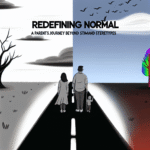
The Ultimate Guide: Feel Free to Mix and Match Elements from These Suggestions or Adapt Them to Better Suit Your Target Audience!
Introduction
In a world overflowing with information, the challenge of connecting with your target audience has never been more paramount. Whether you are a marketer, educator, or entrepreneur, understanding how to deliver your message effectively is essential. The phrase "Feel free to mix and match elements from these suggestions or adapt them to better suit your target audience!" isn’t simply a suggestion—it’s a strategy rooted in adaptability and creativity.
Imagine crafting a message that resonates deeply with your audience, compelling them to engage, share, and act. This guide will provide invaluable insights into mixing and matching various elements to achieve this goal. From understanding your audience to employing case studies, we’ll explore methods that will elevate your communication strategy to an essential level. Let’s delve into strategies that will captivate your readers and, ultimately, lead to success.
Understanding Your Audience
Research and Analysis
Before you begin mixing and matching elements, understanding your target audience is crucial. Who are they? What do they care about? Conducting thorough research can provide answers. Tailoring your approach starts with audience segmentation, which helps clarify what resonates with different groups.
- Demographics: Age, gender, income levels.
- Psychographics: Interests, values, lifestyle choices.
Consider using tools like Google Analytics, social media insights, or surveys to gather data. This foundational step will enable you to create content that speaks directly to your audience’s needs and interests.
Crafting Your Message
The Art of Storytelling
Incorporating storytelling into your content is a powerful way to engage. When you "mix and match" elements of narrative, you can transform dry information into compelling stories that resonate emotionally.
Case Study: Nike’s "Just Do It"
Nike’s iconic slogan combines personal struggle with motivation, encouraging individuals to push their limits. By adapting this narrative approach, you make your content more relatable.
- Key Takeaway: Aim to inject storytelling elements that complement your core message. This approach fosters connection, making your audience more likely to engage.
Visual Elements
Visual content often speaks louder than words. Infographics, charts, and images can clarify the points you’re making and provide a multifaceted view of your subject matter.
Chart: Engagement Strategies By Format
| Format | Engagement Level | Example |
|---|---|---|
| Text Articles | Moderate | Blog Posts |
| Infographics | High | Data Visualization |
| Videos | Very High | Short Tutorials |
| Podcasts | High | Interviews |
- Recommendation: For optimal engagement, consider mixing visual elements with text by adapting your content dynamically based on audience preferences.
Mixing and Matching Techniques
Integrating Different Mediums
Don’t limit yourself to a single format. Sometimes, the most impactful messages are created through a blend of media. Feel free to mix and match elements from these suggestions or adapt them to better suit your target audience! Here’s how:
- Blog Posts + Video: Accompany written content with video segments summarizing key points.
- Podcasts + Infographics: Use infographics to visualize statistics mentioned in podcast discussions.
- Webinars + Interactive Content: Provide engaging Q&A sessions during webinars to encourage participation.
Real-World Application: HubSpot
HubSpot employs a multi-channel strategy in their content marketing, combining blogs, e-books, and webinars. This diverse approach keeps audiences engaged at different touchpoints.
- Key Insight: Diversifying your content format increases reach and relevance, as different audiences engage with different types of content.
Analyzing and Refining Your Approach
Feedback and Iteration
No content strategy is complete without feedback. Regularly solicit input from your audience to understand what resonates and what doesn’t. Use tools like social media polls, feedback forms, and user comments to gauge reactions.
- Example: After a webinar, ask attendees what content they found most valuable. Use this data to adapt future content.
Case Study: Buffer
Buffer uses feedback loops from their audience to refine their blog topics continually. This practice ensures they remain relevant and valuable to their readers.
- Insight: Regularly adjusting your content strategy according to audience feedback creates a more engaged community, enhancing loyalty and trust.
Conclusion
The landscape of communication continues to evolve, making the ability to adapt crucial for success. By employing the methods outlined in this guide, you can effectively reach and resonate with your audience. Remember, the mantra "Feel free to mix and match elements from these suggestions or adapt them to better suit your target audience!" is not just about flexibility; it’s about creating meaningful, impactful content that truly connects.
As you move forward, take inspiration from these strategies, adapt them to your style, and make the art of communication a powerful tool in your arsenal. By truly understanding your audience and being willing to change, you’ll unlock new levels of engagement and effectiveness.
FAQs
1. How do I know my audience’s preferences?
Conduct surveys, analyze engagement metrics, and monitor social media interactions for insights into what your audience values.
2. What types of visual elements should I use?
Consider infographics, videos, or images that reinforce your message and enhance comprehension.
3. How often should I seek feedback?
Regularly, after each major piece of content, and quarterly for overall strategy evaluation will keep your approach dynamic.
4. What if my audience doesn’t engage?
Re-evaluate your content strategy; ensure that you’re in tune with their current preferences and needs, and try new formats or topics.
5. Can I adapt methods from other industries?
Absolutely! Many successful strategies may transcend industry boundaries. Feel free to innovate and blend ideas.
Feel free to mix and match elements from these suggestions or adapt them to better suit your target audience! You hold the key to unlocking meaningful connections.















